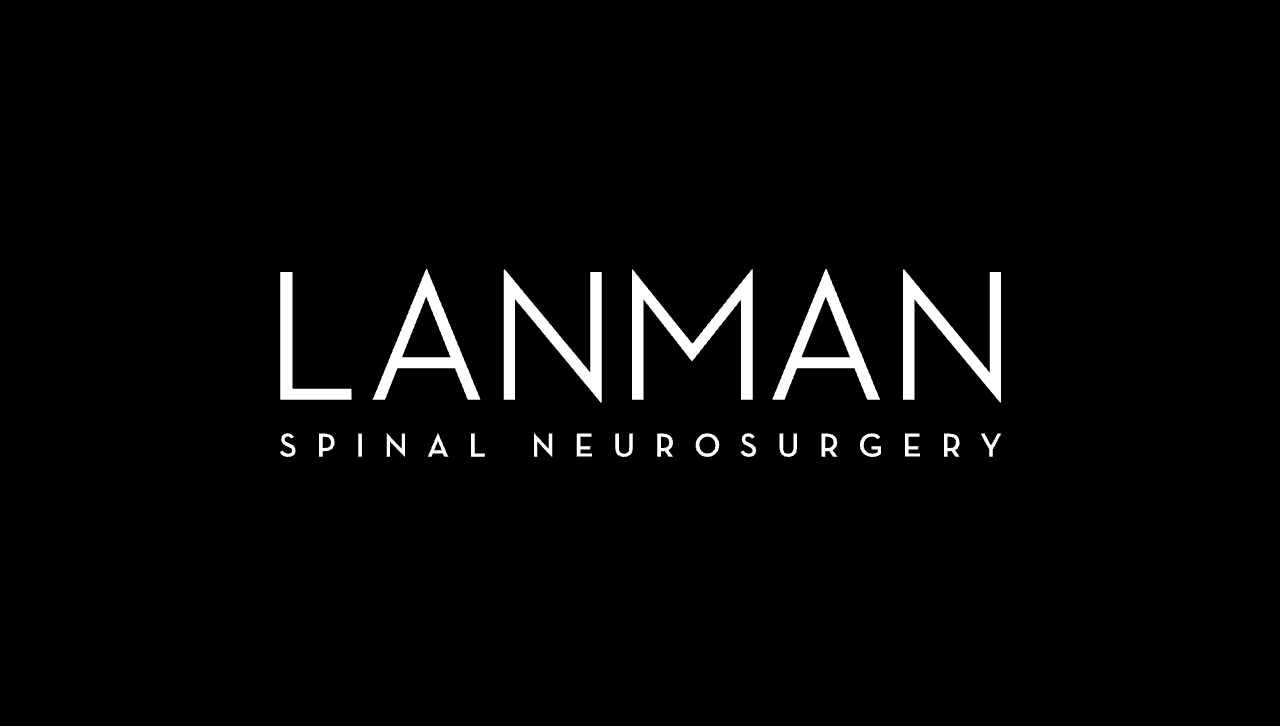Cervical degenerative disc disease is the breakdown of one or more spinal discs in the neck that causes signs or symptoms like neck or arm pain, strange sensations in the arm, weakness, or numbness. Cervical degenerative disc disease has many possible causes and can be treated in a variety of ways from medication to injections to spine surgery. Dr. Todd Lanman is widely considered a top spinal surgeon in LA and Southern California. In this article, we discuss what cervical degenerative disc disease is, what causes it, and the various ways in which a leading spine surgeon like Todd Lanman, MD, can treat cervical degenerative disc disease this disease.
What is Cervical Degenerative Disc Disease In the Neck?
Between most of our spinal bones (vertebrae) lies an intervertebral disc. These discs, with a tough exterior and rubbery center, separate the vertebrae so that nerves can pass to and from the spinal cord. The discs also act as shock absorbers for the spine, and allow the spinal bones to move, bend and twist relative to each other. When one or more of these cervical discs degenerate, the spinal discs do not perform these functions like they once did, causing pain and dysfunction in the neck, shoulder, and/or arms.
What are the Causes of Cervical Degenerative Disc Disease In the Neck?
The cause of cervical degenerative disc disease is multifactorial, which means several causes contribute to the disease.
Genetics – Genetics plays a large role in cervical degenerative disc disease; if you have relatives with cervical degenerative disc disease, you are much more likely to have it yourself.
Age – Unfortunately, the risk of developing cervical degenerative disc disease increases as we age. As the disc ages, it loses water and starts breaking down. Advancing age is perhaps the strongest risk factor for degenerative disc disease.
Smoking – Smoking accelerates the spinal disc aging process.
Neck Injury – While degenerative disc disease is often caused by simple wear and tear of the disc acquired over long periods of time, certain injuries to the neck can accelerate disc degeneration.
Symptoms and Warning Signs
People with cervical degenerative disc disease will typically have neck discomfort and pain, arm or shoulder pain, and paresthesias, numbness, or weakness in the arm.
Neck discomfort – The typical pain of cervical degenerative disc disease is a low-level stiffness or achiness punctuated by flares of severe pain with movement.
Radicular pain – Radicular pain in the neck, shoulder, and/or arm is pain caused by pinching of nerves at a cervical nerve root. This pinching may cause paresthesias, numbness, weakness, and/or changes in spinal reflexes. Paresthesias are abnormal sensations that many people call “pins and needles.” Cervical radicular pain may also cause shooting or “electric shock” pain down the arm.
The warning signs of cervical degenerative disc disease are signs that indicate you should seek medical treatment immediately. The warning signs of cervical degenerative disc disease include radicular pain that started about the same time as a fever, symptoms that are accompanied by unplanned weight loss, loss of bowel or bladder function, or paralysis.
Diagnosing Cervical Degenerative Disc Disease in the Neck
Your spine surgeon will diagnose cervical degenerative disc disease through a combination of history, physical examination, and perhaps one or more imaging studies. An MRI of the neck gives the highest quality image of the muscle, spinal cord, discs and nerves. Dr. Lanman almost always gets a CT scan to assess the bone quality as well as assessing facet arthritis and bone spurs. While an MRI may not be necessary to diagnose cervical disc disease, it is usually important to have a cervical spine MRI prior to spine surgery. MRI, CT Scan and full X-rays with head bending in different positions because it’s important for Dr. Lanman to know how your spine moves. Everyone’s spine has different movement, arcs, and curves that will be assessed in a standing X-ray. The reason being the MRI and CT scan are done laying down which does not provide information in a standing position with weight loaded on your spine.
Cervical Degenerative Disc Disease Treatment Options
Cervical degenerative disc disease treatment options include conservative treatments, physical therapy, injections, and spine surgery.
Conservative treatments for cervical degenerative disc disease – Unless you have one of the warning signs discussed above, you will usually start with conservative treatment. Conservative treatments for cervical degenerative disc disease include selective rest, ice therapy, heat therapy, and non-steroidal anti-inflammatory drugs (NSAIDs) or acetaminophen.
Physical therapy for cervical degenerative disc disease – Physical therapy for cervical degenerative disc disease includes strengthening and stretching exercises, manual therapy, massage therapy, and ultrasound treatment.
Injections for cervical degenerative disc disease – Injections for cervical degenerative disc disease can either be placed in the cervical epidural space (space around the spinal cord) or very near the cervical nerve root. These injections include a steroid to reduce inflammation and possibly a local anesthetic to deaden the pain temporarily. In order to inject the solution into precisely the right location, cervical spine injections should be performed by pain management specialists and usually under fluoroscopy guidance, that is, while being imaged with a special X-ray machine.
Spine surgery for cervical degenerative disc disease – The two main spine surgeries for cervical degenerative disc disease are cervical artificial disc replacement and cervical spinal fusion. In both spine surgeries, the problematic disc is removed and any areas that are impinging on the nerves are widened/decompressed. However, the major difference between the two spine surgeries for cervical degenerative disc disease is what happens after the problematic disc is removed.
In cervical artificial disc replacement, an artificial disc is placed between the spinal bones to give the spine separation, strength, stability, and mobility. In cervical spinal fusion, bone-like material and screws, plates, and rods are used to give the spinal bones separation, strength, and stability. However, since the spinal bones are fused together, cervical spinal fusion does not provide the neck with the same mobility as cervical artificial disc replacement.
After Treatment Care
While most cases of neck pain resolve with conservative treatments, degenerative disc disease tends to be a chronic and recurrent problem. Once you have had one symptomatic disc, you are likely to have problems with your discs again in the future. Ideally, you would be followed by a spine surgeon who knows your case and is able to direct treatment as needed in the future—whether those are conservative treatments, physical therapy, injections, or spine surgery. Once you have established a professional relationship with a spine surgeon, it is easier to access high-quality, specialized care for cervical degenerative disc disease when you need it.
Conclusion
Cervical degenerative disc disease has many causes. Aside from smoking, those causes are outside of your control. Thus, if you develop cervical degenerative disc disease, it is important to choose the right treatment. Treatments for cervical degenerative disc disease range from conservative measures to spine surgery. To get the best possible care, meet with a spine surgeon to discuss your case even if you don’t need spine surgery. Dr. Todd Lanman is one of the top spine surgeons in Los Angeles. If you have or think you may have cervical degenerative disc disease, contact Todd Lanman, MD, in is Beverly Hills office today.







